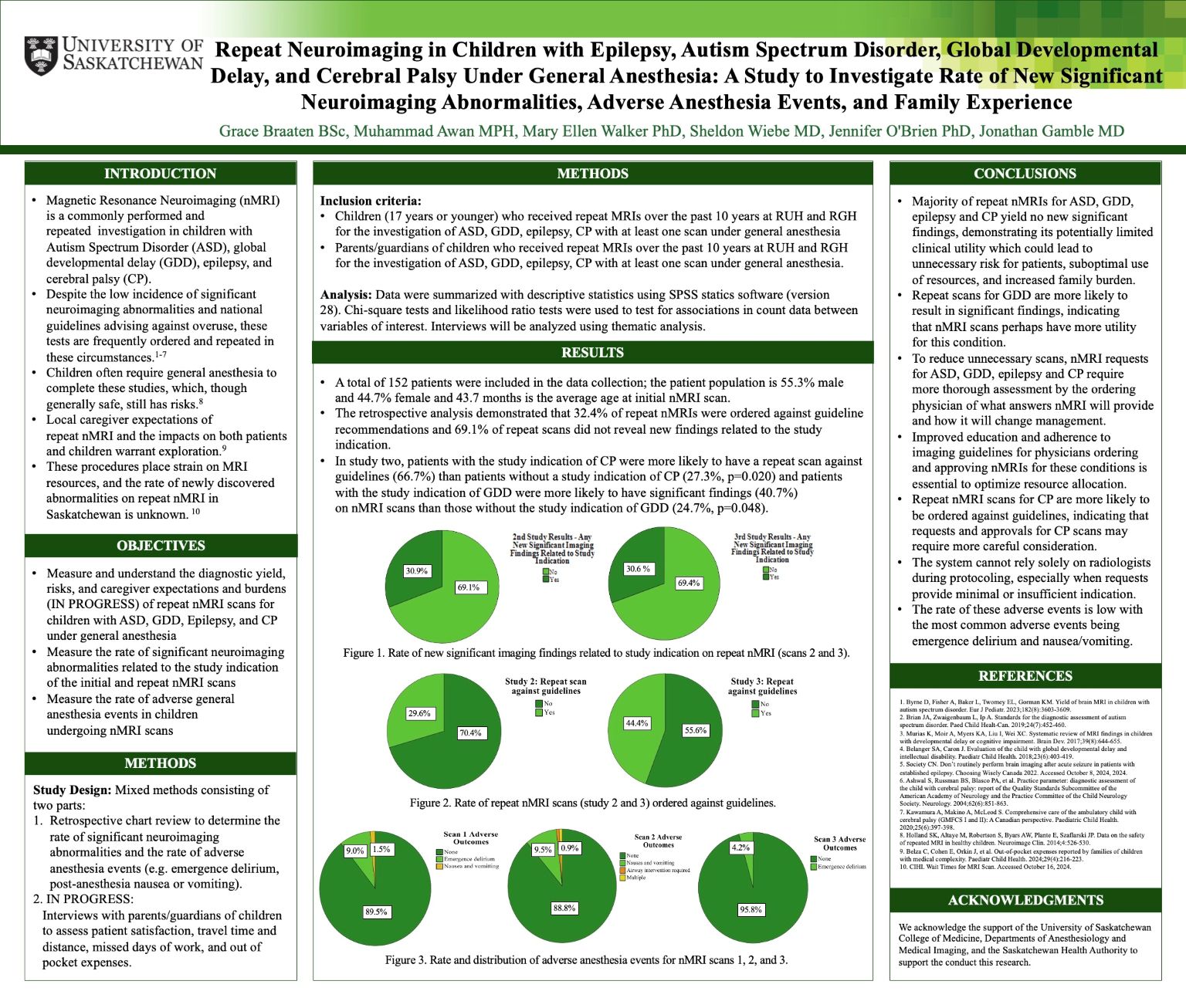
Repeat Neuroimaging in Children with Epilepsy, Autism Spectrum Disorder, Global Developmental Delay, and Cerebral Palsy Under General Anesthesia
Grace Braaten & Muhammad Awan
Introduction: Magnetic resonance neuroimaging (nMRI) is frequently repeated in children with autism spectrum disorder (ASD), global developmental delay (GDD), epilepsy, and cerebral palsy (CP), despite a low incidence of new abnormalities and guidelines discouraging repeat imaging. These studies strain both MRI and anesthesia resources, and the diagnostic yield of repeat nMRI in Saskatchewan is unknown. This study evaluates the diagnostic yield, risks, and family impact of repeat nMRI under general anesthesia in these populations.
Methods: We conducted a mixed-methods study: a 10-year retrospective review of repeat nMRIs for children in Saskatchewan with ASD, GDD, epilepsy, or CP who underwent at least one anesthetized scan, and prospective caregiver interviews (ongoing) exploring caregiver expectations and burdens.
Results: The retrospective analysis demonstrated that 32.4% of repeat nMRIs were ordered against guideline recommendations and 69.1% of repeat nMRIs did not reveal new relevant findings. However, repeat scans for GDD were more likely to yield significant abnormalities. Adverse anesthesia events were uncommon, with emergence delirium (7.6%) and nausea/vomiting (0.9%) most frequent, supporting overall safety of anesthesia.
Conclusions: Improved physician education, adherence to guidelines, and thorough assessment of how the nMRI will change management may reduce unnecessary imaging, optimize resource allocation, and minimize family burden.
